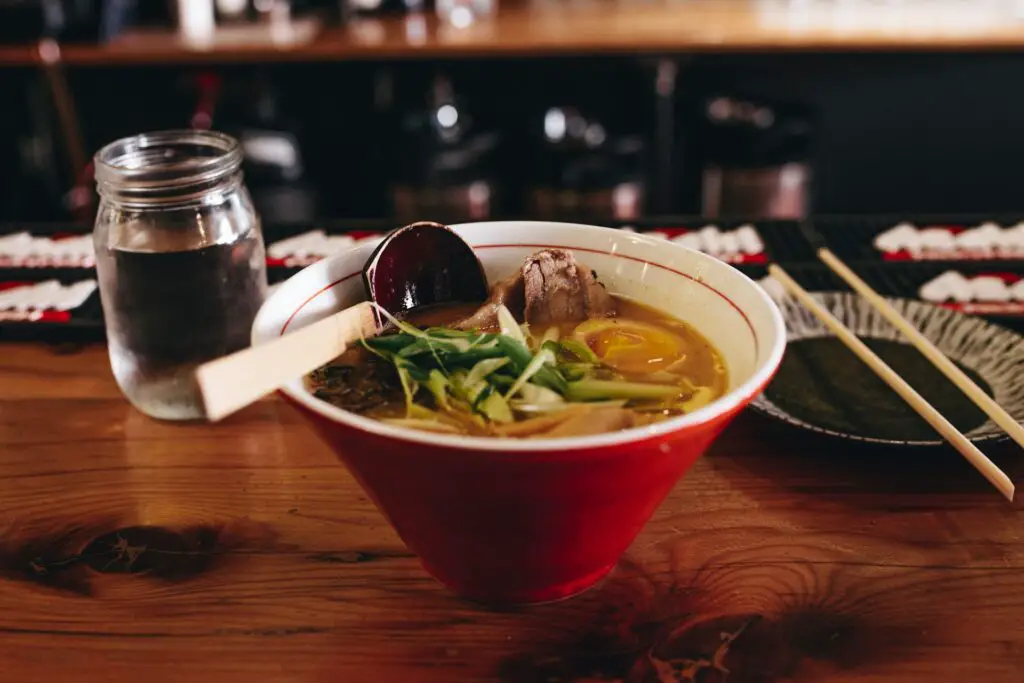Miso soup, a staple of Japanese cuisine, has warmed hearts and homes for centuries. Its rich history and simple elegance make it a favorite among both traditionalists and modern food enthusiasts. This nourishing broth, known for its health benefits and soothing qualities, is surprisingly straightforward to prepare, requiring just a few essential ingredients and steps.
Whether you’re a seasoned chef or a culinary novice, this miso soup recipe promises to bring a taste of Japan into your kitchen.
Ingredients:
4 cups of water
2 teaspoons dashi granules (Japanese soup stock)
3 tablespoons miso paste (white, red, or a mix)
1 block of tofu (firm or soft, according to preference), cut into small cubes
2 green onions/scallions, thinly sliced
Optional: wakame (dried seaweed), rehydrated in water
Preparation:
Start with the Dashi: In a medium-sized saucepan, bring the water to a gentle simmer over medium heat. Avoid boiling to maintain the integrity of the dashi flavor. Stir in the dashi granules until fully dissolved.
Add the Tofu: Reduce the heat to low and add the tofu cubes to the simmering dashi broth. If you’re using wakame, this is the time to add it as well, ensuring it’s well-drained before incorporating.
Dissolve the Miso Paste: In a separate bowl, take a ladleful of the hot dashi broth and mix it with the miso paste. Stir until the paste is completely dissolved, forming a smooth mixture. This step is crucial to prevent lumps of miso in your soup.
Combine: Gently pour the miso mixture back into the saucepan, stirring well to integrate. It’s important to keep the heat low to preserve the live cultures in the miso paste, which contribute to its health benefits and unique flavor.
Final Touches: Once the miso is fully incorporated, add the sliced green onions. Let the soup simmer for another minute or so, ensuring it doesn’t boil.
Serve Warm: Ladle the soup into bowls, being careful to distribute tofu and scallions evenly. Serve immediately, allowing the warmth and flavors to envelop you.
Tips and Variations:
Miso Type: Experiment with different types of miso (white, red, or a blend) to discover your preferred taste profile. White miso offers a milder, sweeter flavor, while red miso is more robust and salty.
Additions: Feel free to add other ingredients such as mushrooms, spinach, or sliced daikon radish for extra texture and flavor.
Dashi: For a vegetarian version, substitute traditional fish-based dashi with a seaweed (kombu) or mushroom dashi.
Miso soup’s simplicity, versatility, and depth of flavor have cemented its status as a timeless classic. By following this basic recipe, you’re not just preparing a meal; you’re embracing a piece of Japanese culinary tradition. Enjoy the process of making your miso soup as much as savoring its warm, comforting embrace.
Health Benefits:
Miso soup is more than just a delight for the taste buds; it’s also packed with nutritional benefits. Miso, a fermented soybean paste, is a rich source of vitamins and minerals, including B vitamins, vitamins E, K, and folic acid. Its fermentation process promotes the growth of beneficial bacteria, which can aid digestion and boost the immune system. The inclusion of tofu provides a good source of protein and calcium, making miso soup a nourishing choice for vegetarians and health-conscious individuals alike.
Cultural Significance:
In Japan, miso soup holds a place of reverence, often served at breakfast and as a fundamental component of any meal. Its roots can be traced back centuries, evolving through the ages yet remaining a comforting constant in the Japanese diet. Each region in Japan boasts its own variation, reflecting local flavors and ingredients. This diversity showcases the adaptability of miso soup, making it a testament to Japan’s rich culinary heritage.
Pairing and Serving Suggestions:
While miso soup can stand alone as a warming snack or appetizer, it truly shines as part of a larger meal. In a traditional Japanese setting, it might accompany rice, pickled vegetables, and a protein such as fish or tofu, creating a balanced and satisfying meal. For a casual lunch or dinner, consider pairing miso soup with sushi rolls, a noodle dish, or a simple vegetable stir-fry to bring a touch of Japanese cuisine to your dining table.
Preserving Tradition While Embracing Innovation:
As global culinary landscapes continue to merge and evolve, miso soup remains a beloved staple, both in its traditional form and through innovative adaptations. Chefs and home cooks alike have begun to experiment with the soup, adding ingredients like corn, potatoes, and even unconventional proteins, to create new variations that respect the essence of the original while catering to contemporary tastes and dietary preferences.
Miso soup’s enduring appeal lies in its simplicity, depth of flavor, and nutritional value. This timeless dish not only offers a window into Japanese culture and history but also provides a versatile canvas for culinary creativity. Whether you’re enjoying a bowl of classic miso soup on a cold morning or experimenting with your own additions, the act of preparing and savoring this dish connects you to a tradition that spans generations. With each spoonful, you’re not just nourishing your body but also partaking in a rich cultural heritage that continues to inspire and comfort millions around the globe.




